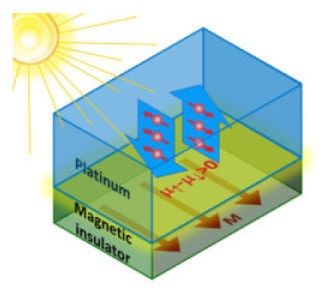With apologies to Isaac Asimov, the most exciting phase to hear in science isn’t “Eureka,” but “That’s funny…”
A “that’s funny” moment in a Colorado State University physics lab has led to a fundamental discovery that could play a key role in next-generation microelectronics.
Publishing in Nature Physics April 25, the scientists, led by Professor of Physics Mingzhong Wu in CSU’s College of Natural Sciences, are the first to demonstrate using non-polarized light to produce in a metal what’s called a spin voltage — a unit of power produced from the quantum spinning of an individual electron. Controlling electron spins for use in memory and logic applications is a relatively new field called spin electronics, or spintronics, and the subject of the 2007 Nobel Prize in Physics.









Comments are closed.